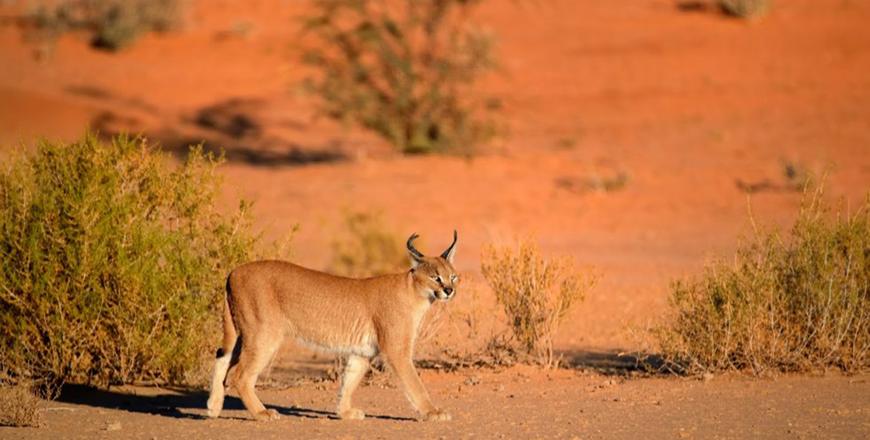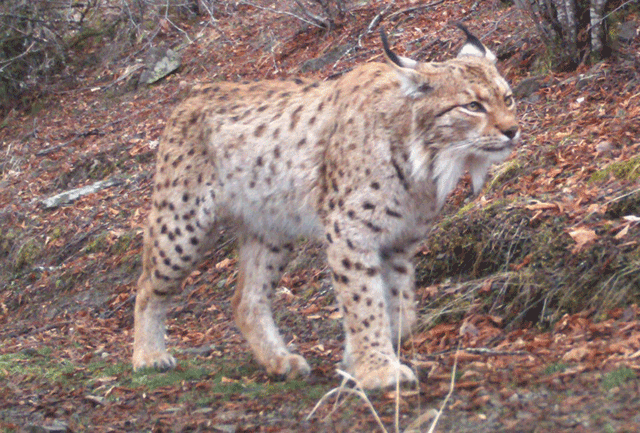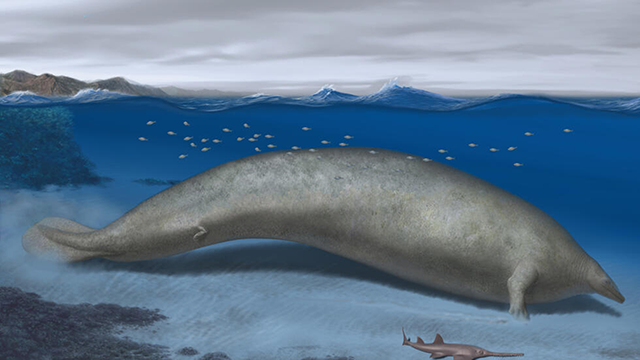You are here
The Lynx
By Chris Larter , Family Flavours - Oct 24,2021 - Last updated at Oct 24,2021

Photos courtesy of Family Flavours magazine
By Chris Larter
Animal Care Specialist
Animals are an endless source of amazing facts. Get an up-close look at one of the planet’s most remarkable wild animals. This month, learn about the lynx!
A different kind of animal from lions and tigers, the lynx, is another member of the cat family. There are four species of these — the Eurasian (the largest species of lynx), the Canada lynx, the Iberian lynx and the bobcat.
Characteristics
All have the same characteristics of a wide skull, reflective eyes, long face whiskers, black tufts on the tips of their ears, long limbs and a short tail. Their colour can range from brown to golden or beige and nearly white. All have white fur on the chest, belly and the inside of their legs. Interestingly enough, the length of their fur varies according to the climate they live in.
Food
A lynx needs one to two kilograms of meat per day. It feeds on a wide range of animals, including various deer, small antelopes, hares, foxes, sheep, goats, squirrels, mice, turkeys, birds and fish. Their favourite meal is roe deer. However, if they don’t find any, they will eat whatever other animal they find.
Size
They are the largest predators in Europe after the brown bear and the grey wolf. They grow to a height of 70 centimetres and are 80 to 130 centimetres in length. Males can weigh 18 to 30 kilogrammes, while females stop at 18 kilogrammes. Lynx are usually solitary, although small groups may travel and hunt together occasionally.
Mating takes place in the late winter and, once a year, the female gives birth to between one and four kittens after a ten-week gestation period. The babies stay with their mother until the following winter before living on their own and fending for themselves.
Types
The Eurasian lynx live in central and northern Europe and Asia to the north of Pakistan and India. In Iran, they live on Mount Damavand. They also live in Slovenia and the Plitvice Lakes National Park and Risnjak National Park in Croatia. Several lynx resettlement projects have been successful in Switzerland and Germany. More Eurasian lynx live in Romania, Poland, Russia, Siberia, China, Estonia, Norway, Sweden and Finland, where they help keep the deer population down.
Canada lynx live all over North America, Canada and Alaska. They have large padded paws so that they can walk on snow. They build rough shelters under fallen trees or rock ledges and can climb trees. They’re also good swimmers and can catch fish. They normally eat snowshoe hares or small animals and birds if nothing else is available. Canada lynx are 48 to 56 centimetres in height, 80 to 100 centimetres long and weigh 8-11 kilogrammes.
The bobcat is a North American wild cat. It is common all over southern Canada, the United States and northern Mexico. It lives in deciduous, coniferous or mixed woodlands and ranges from swamps and desert lands to mountains and agricultural areas. Its spotted coat and striped legs serve as camouflage. As its height is only 51 to 61 centimetres, its length 71 to 100 centimetres and its weight only 9 kilogrammes, it is sometimes killed by coyotes, which are slightly larger. The Iberian lynx is the most endangered of the species. It is native to the Iberian Peninsula in Spain and Portugal. It has a spotted coat and grows to a height of 60 to 70 centimetres and a length of 85 to 140 centimetres. Males weigh up to 13 kilogrammes and females up to 9.4 kilogrammes.
Lynx in Jordan
Surprisingly, there are a limited number of lynx in Jordan. These are slightly smaller than the bobcat and live in the rough, bare mountainous regions overlooking the Jordan Rift Valley, where they can find caves and hiding places that offer them protection and shelter. They live on rodents, birds, hares, lizards and small deer. The females like to give birth in natural crevices or holes abandoned by other animals.
Some 20 years ago, two lynx arrived at the Society for the Protection of Animals Abroad clinic in Wadi Seer. We looked after them for a few days. I was never sure why they came in, as they didn’t need any treatment. The only space where we could put their cage was on a landing halfway up the stairs to the offices! Whenever anyone walked past, they would suddenly fling themselves onto the side of the cage, hissing and spitting fiercely. We got used to this, but many a visitor nearly had a heart attack!
Reprinted with permission from Family Flavours magazine
Related Articles
GORICA, Albania — In mountains overlooking an azure lake in southeast Albania, wildlife experts are tracking the Balkan lynx as part of last
AMMAN — Deer farming and domestication is now accessible for Jordanians, as the Ministry of Agriculture floated a tender for the publi
LIMA — Look out, blue whale — there’s a new contender for your heavyweight title.A newly discovered whale that lived nearly 40 million years



















